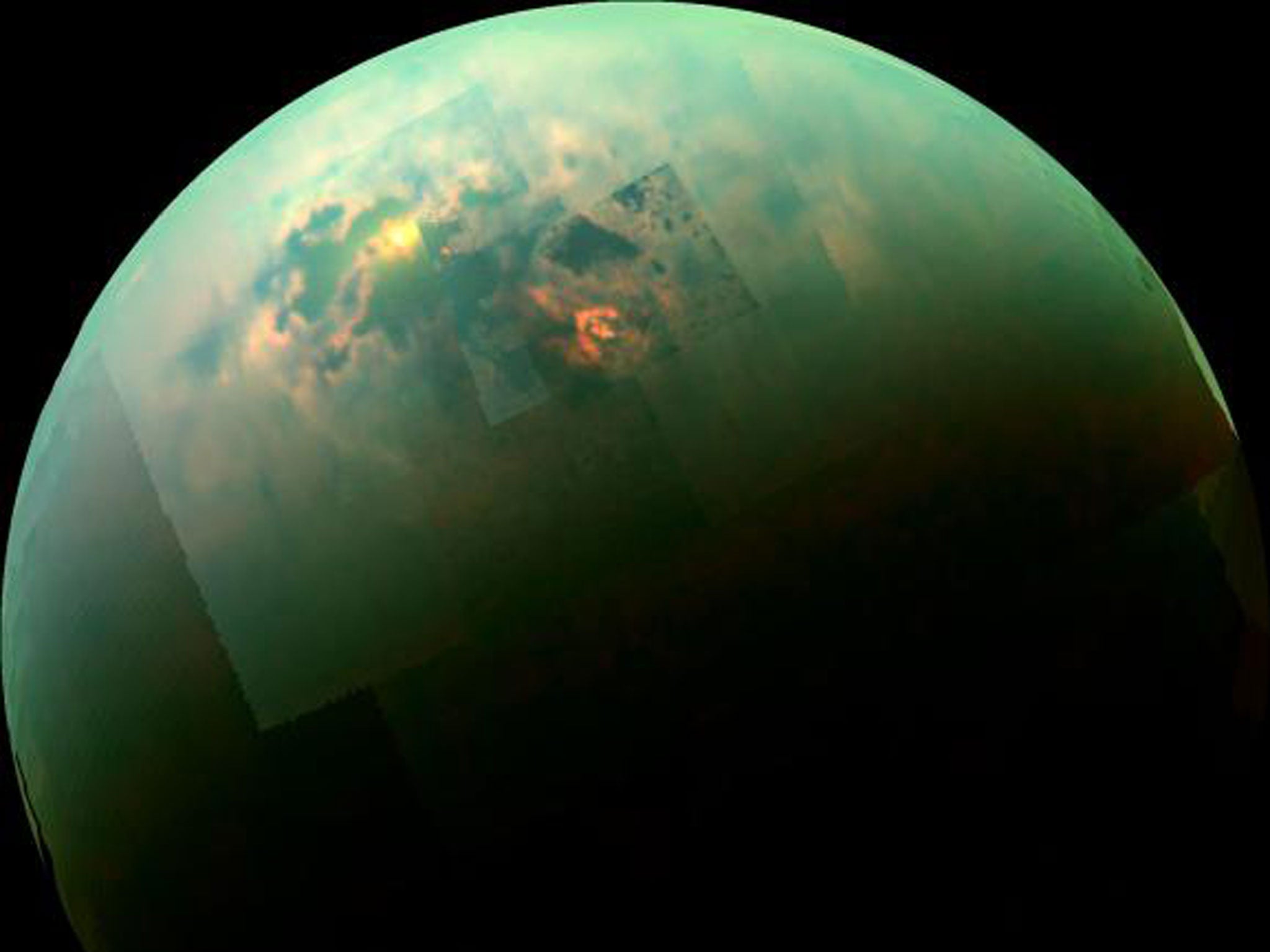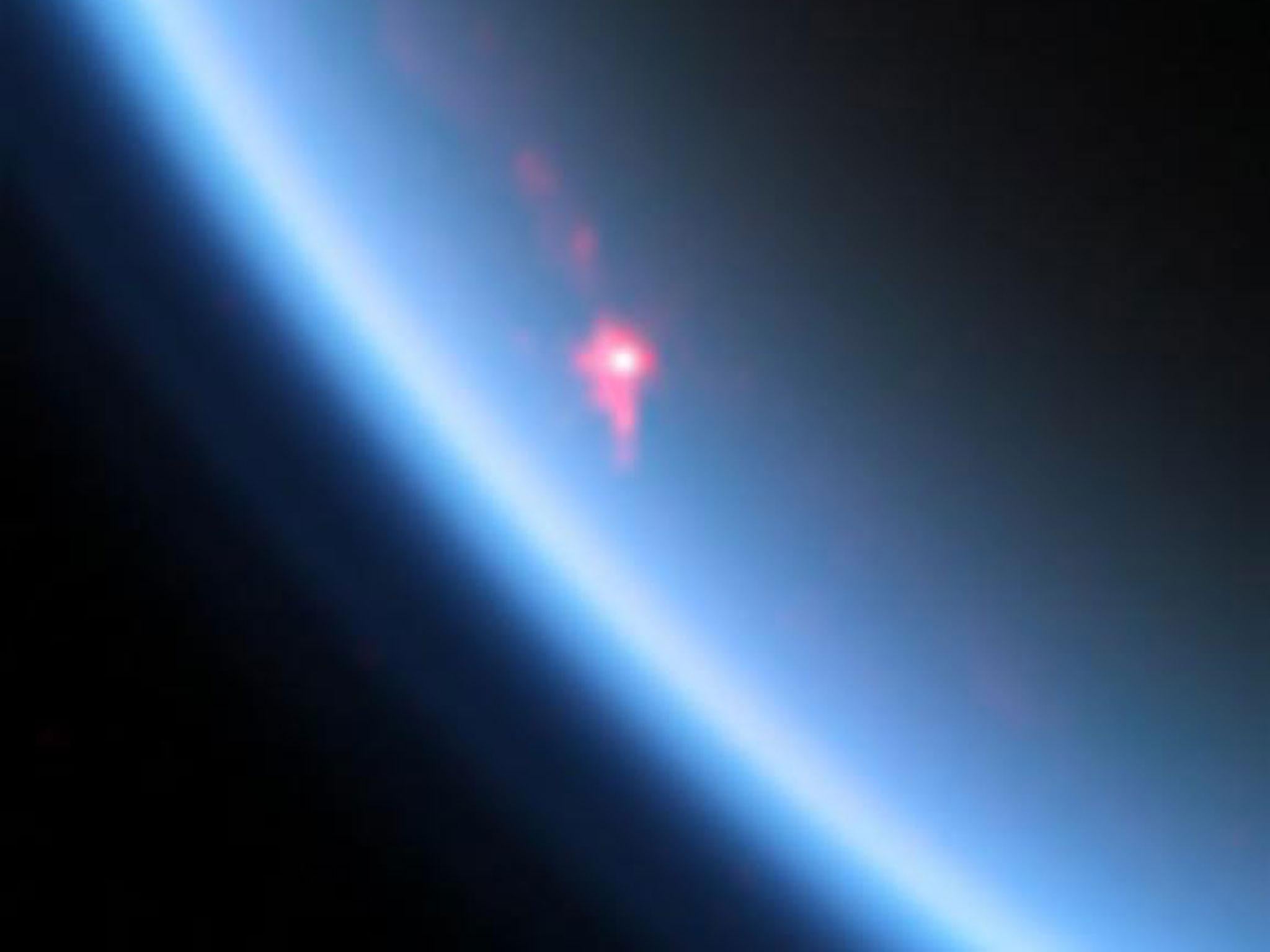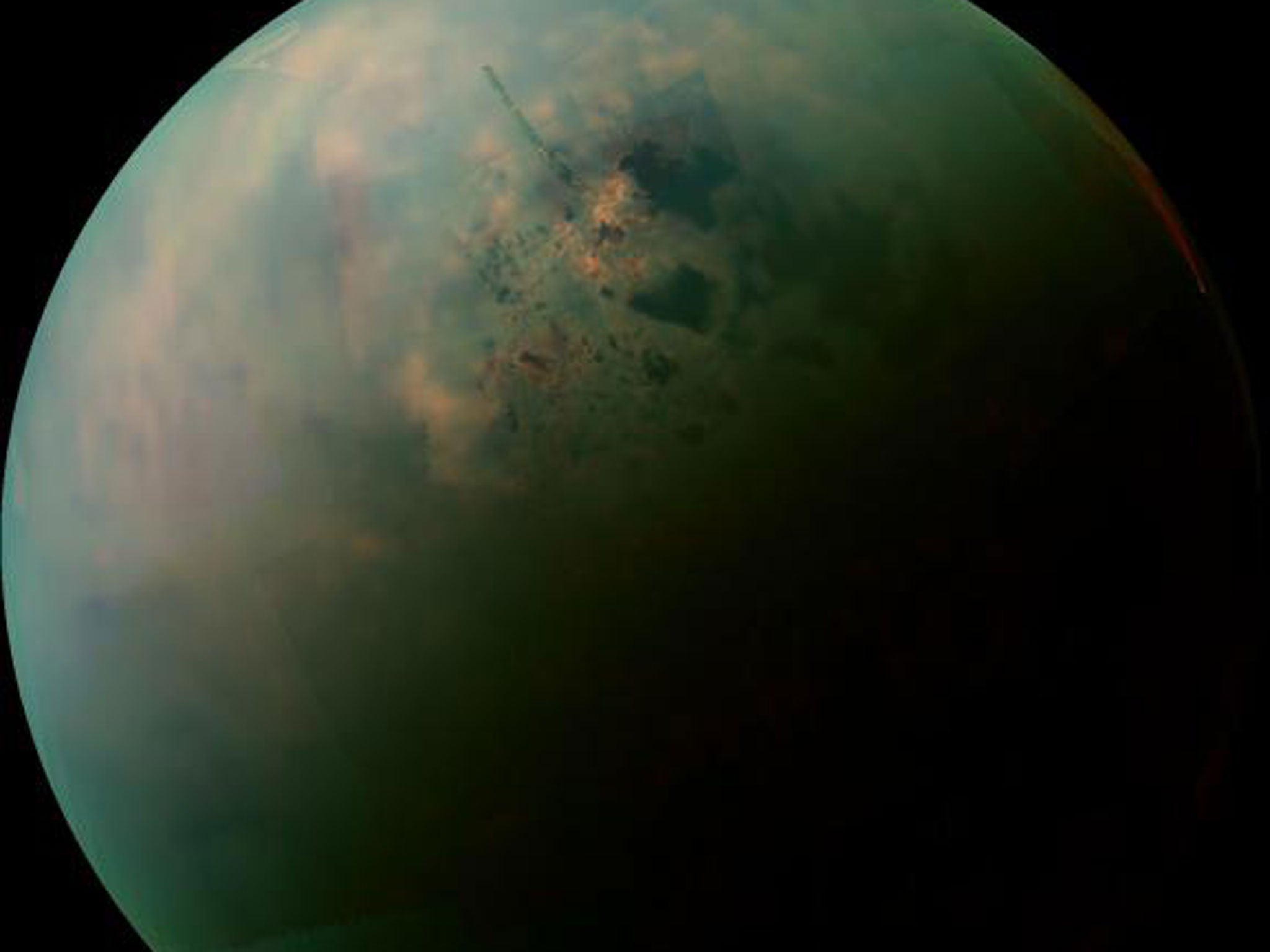Stunning Nasa image reveals surface of Saturn's Titan moon
The image suggests that one of Titan's seas was once much larger

Your support helps us to tell the story
From reproductive rights to climate change to Big Tech, The Independent is on the ground when the story is developing. Whether it's investigating the financials of Elon Musk's pro-Trump PAC or producing our latest documentary, 'The A Word', which shines a light on the American women fighting for reproductive rights, we know how important it is to parse out the facts from the messaging.
At such a critical moment in US history, we need reporters on the ground. Your donation allows us to keep sending journalists to speak to both sides of the story.
The Independent is trusted by Americans across the entire political spectrum. And unlike many other quality news outlets, we choose not to lock Americans out of our reporting and analysis with paywalls. We believe quality journalism should be available to everyone, paid for by those who can afford it.
Your support makes all the difference.US space agency Nasa has released a stunning image revealing the polar seas on one one of Saturn’s moons alongside sun glints for the first time.
Shot by Nasa’s Cassini spacecraft in late August, the image shows sun light reflecting off Titan's swirling surface.
Titan is the largest of Saturn’s 53 official moons, and is the second largest moon in the Solar System, after Jupiter’s Ganymede. With a diameter 50 per cent larger that Earth’s moon, Titan is mainly composed of water, ice and rocky material while its atmosphere is largely nitrogen.
In the past, Cassini has captured separate images of the polar seas and the sun shining against them (as show below), but this is the first time both have been seen together in the same view.


The sun's glint, also called a specular reflection, appears in the image as the bright area near the 11 o'clock position on the upper left. This mirror-like reflection, known as the specular point, is in the south of Titan's largest sea, Kraken Mare, just north of an island archipelago separating two separate parts of the sea.
The image is also particularly special because the sun’s glint appears much higher than in has in previous collections of data.
And when the image was captured, the sun’s glint was so bright that it saturated the detector of Cassini's Visual and Infrared Mapping Spectrometer (VIMS) instrument. Because it was so bright, this glint was visible through the haze at much lower wavelengths than before, down to 1.3 microns.
From the image, scientists understand that the Kraken Mare sea was larger at some point in the past, but has since evaporated.
This is revealed by the southern portion of the Kraken mare - the area surrounding the specular feature toward upper left – which has a “bathtub ring” made of material left behind after the methane and ethane liquid evaporated – similarly to the saline crust which remains on a salt flat.
But the snap is not a photograph, but rather an image comprised of ‘real colour information’ in wavelengths that correspond to atmospheric windows through which Titan's surface is visible, according to Nasa. The unaided human eye would see nothing but haze.
Cassini captured this image by flying by Titan, with the area seen immediately to the right of the sunglint being the highest resolution data collected. It reveals the labyrinth of channels that connect Kraken Mare to another large sea, Ligeia Mare.
Ligeia Mare itself is partially covered in its northern reaches by a bright, arrow-shaped complex of clouds. The clouds are made of liquid methane droplets, and could be actively refilling the lakes with rainfall.
Join our commenting forum
Join thought-provoking conversations, follow other Independent readers and see their replies
Comments